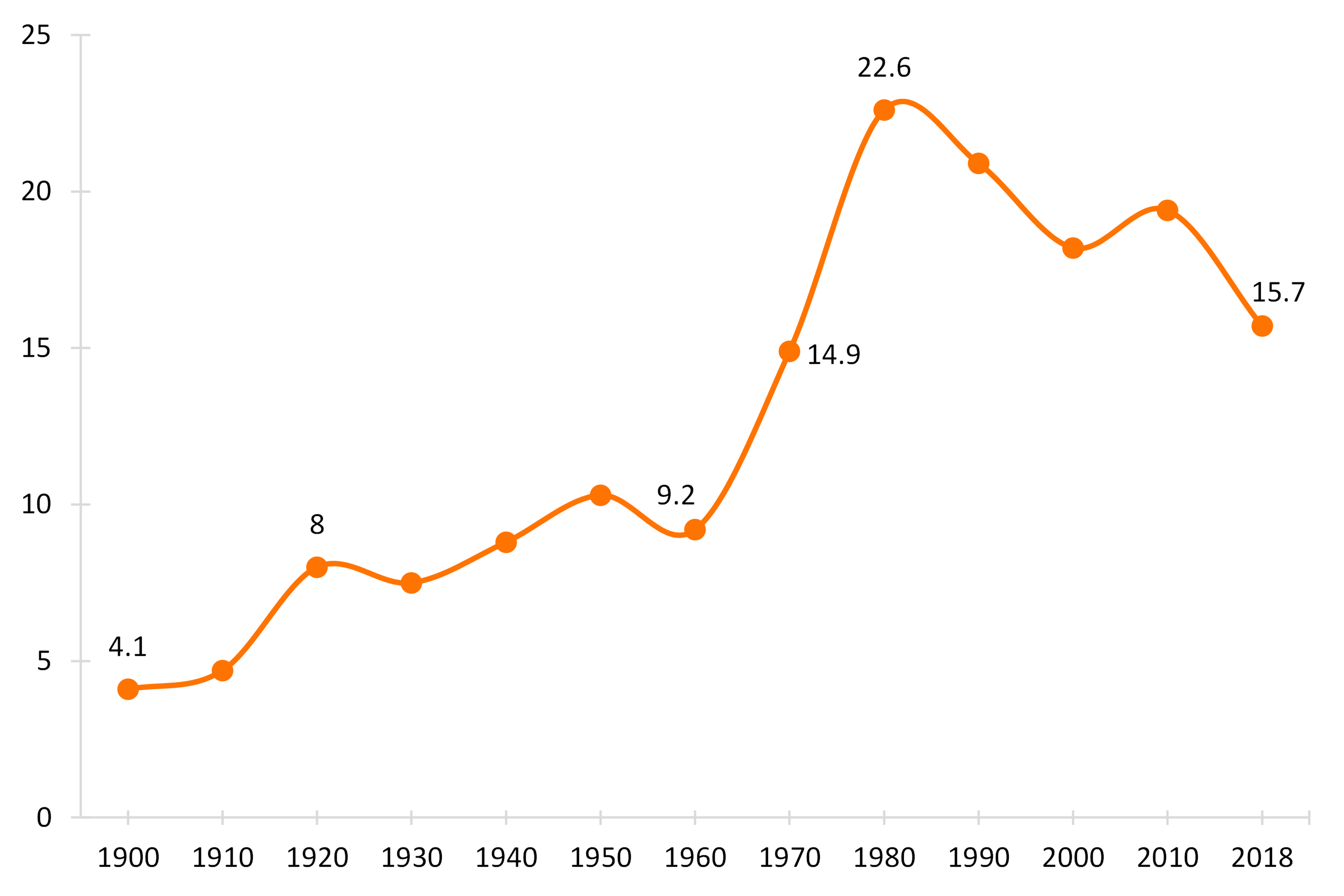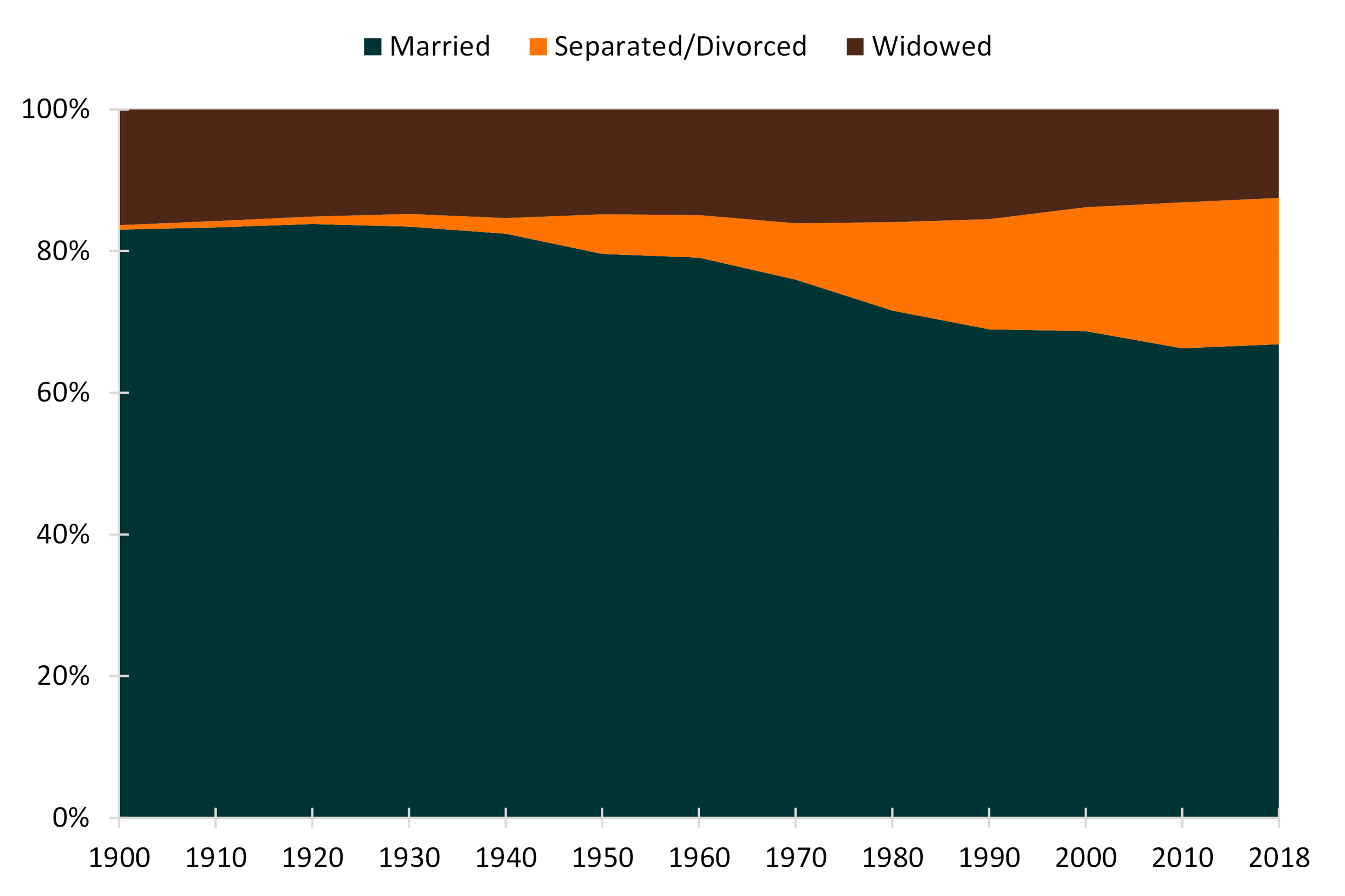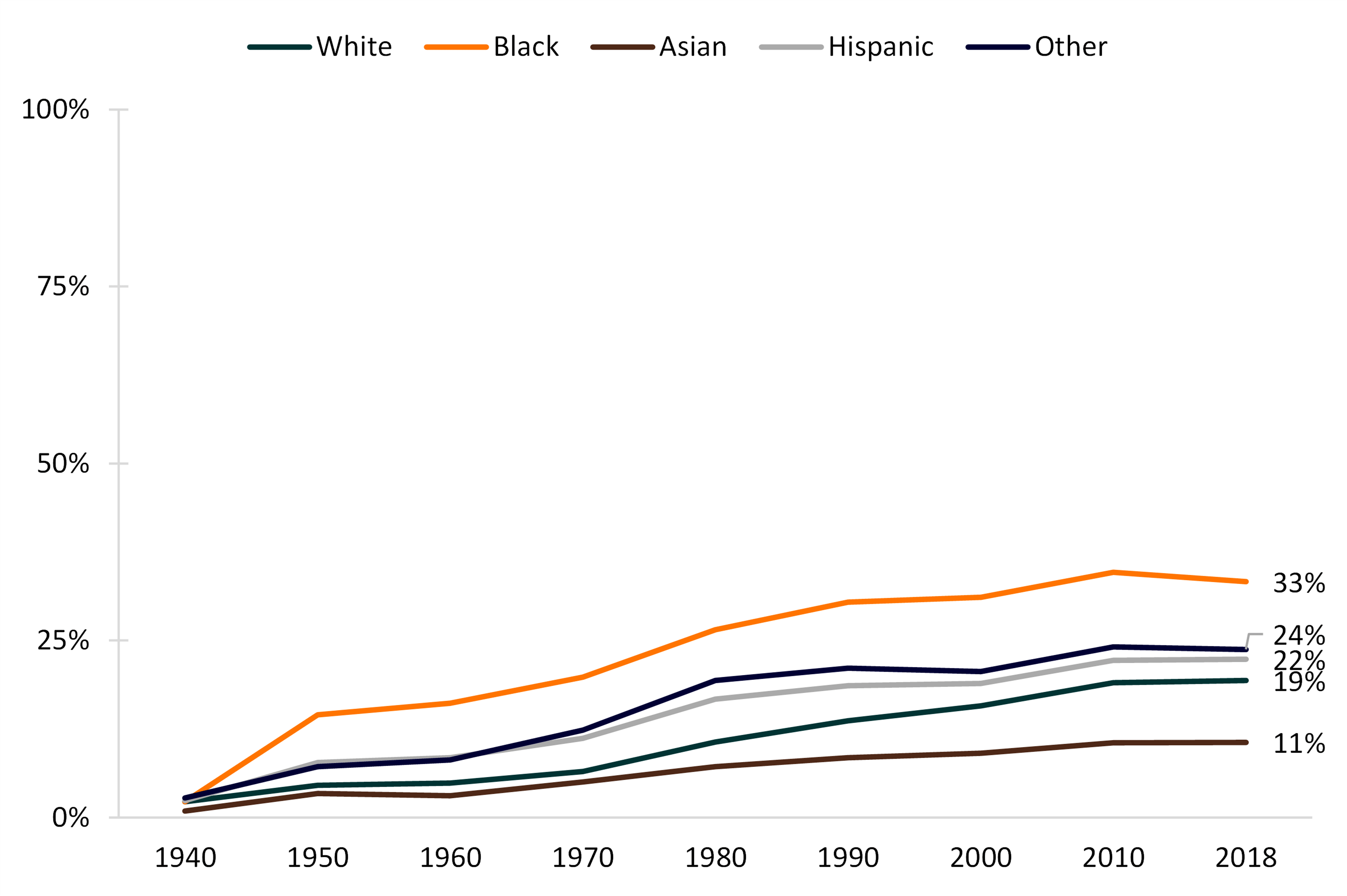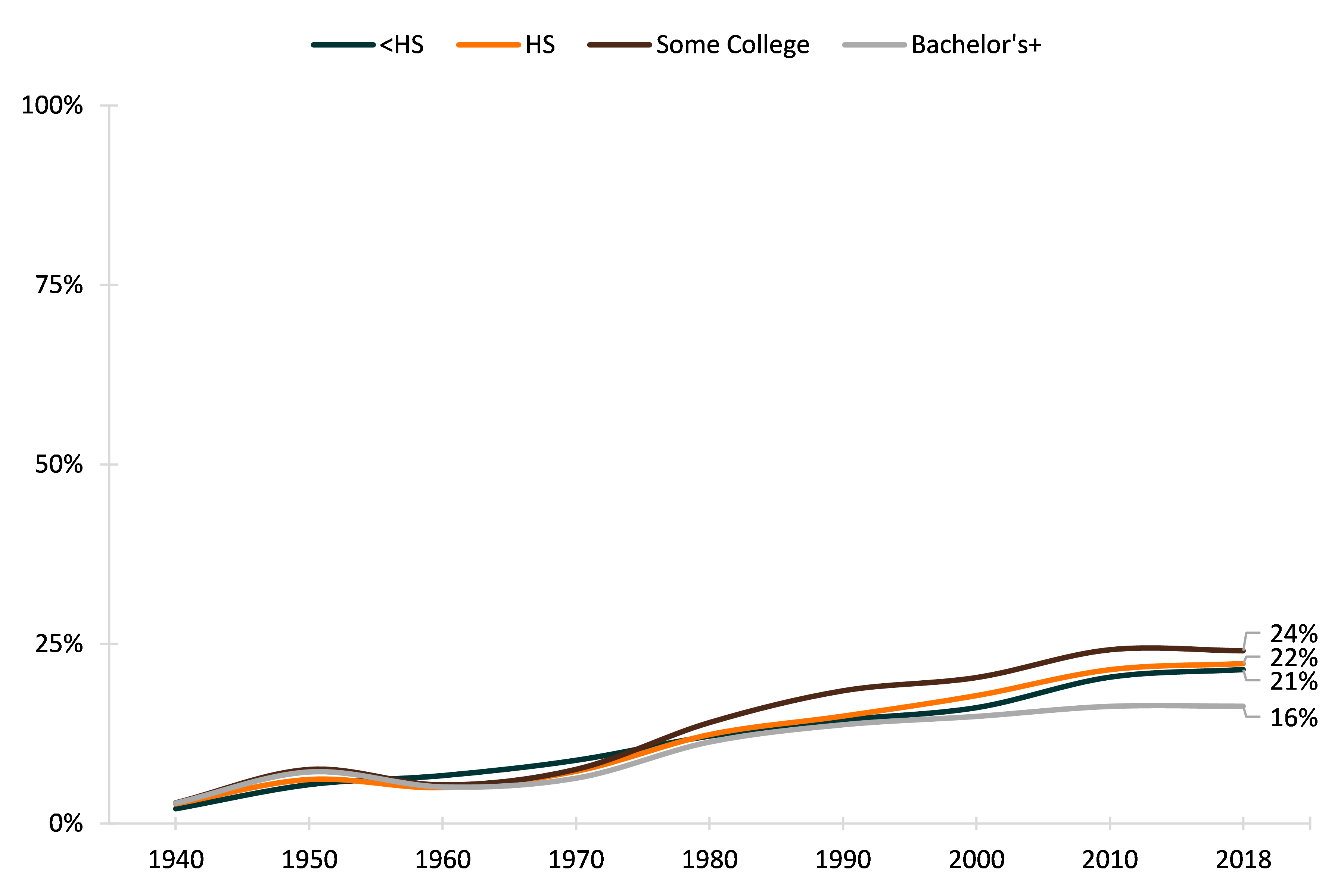Divorce: More than a Century of Change, 1900-2018
Family Profile No. 22, 2020
Author: Valerie Schweizer
During the twentieth century, the divorce rate in the United States increased overall, although it has been declining in recent decades. Using National Vital Statistics, Decennial Census, and American Community Survey data, we investigate women’s divorce rate and the proportion of women separated/divorced over time from 1900 to 2018. Then, we examine currently separated/divorced women by race/ethnicity and educational attainment from 1940 to 2018. This is a companion profile to FP-20-21 on marriage and FP-20-23 on widowhood.
Change in the Divorce Rate in the U.S., 1900-2018
- Almost four times as many women experienced a divorce in 2018 compared to 1900, with rates of 15.7 and 4.1, respectively.
- The peak divorce rate of 22.6 occurred in 1980 but has since declined.
Figure 1. Women’s Divorce Rate, 1900-2018

Marital Status of Ever-Married Women, 1900-2018
- Among ever-married women, the percentage currently separated/divorced increased since 1900 from less than 1% to 21% in 2018.
- The proportion of ever-married women who were currently married decreased from 83% in 1900 to 67% in 2018.
- The percentage of ever-married women who were currently widowed remained fairly stable since 1900—dropping from 16% in 1900 to 12% in 2018.
Figure 2. Current Marital Status of Ever-Married Women, 1900-2018

Variation in Percentage Currently Separated/Divorced According to Race and Ethnicity, 1940-2018
- Among ever-married women in 1940, about 2% were currently separated/divorced regardless of race/ethnicity, except for Asians (0.9%).
- In 2018, Other and Hispanic ever-married women had similar shares who were separated/divorced, at 24% and 22%, respectively.
- The percentage of Black ever-married women who were separated/divorced diverged from the other groups early in the period, rising to 33% by 2018.
- Asian ever-married women have had the lowest percentage separated/divorced at every decade since 1940, with only 11% currently separated or divorced in 2018.
Figure 3. Percentage of Ever-Married Women Currently Separated/Divorced, by Race 1940-2018

Variation in Percentage Currently Separated/Divorced According to Educational Attainment, 1940-2018
- Among ever-married women in 1940, about 3% in all education groups were separated/divorced.
- In 2018, those with some college education had the highest percentage of those separated/divorced with 24%, followed closely by those with a high school education (22%) and those with less than a high school education (21%).
- Ever-married women with a bachelor’s degree or higher had the lowest percentage who were currently separated/divorced at 16% in 2018.
Figure 4. Percentage of Ever-Married Women Currently Separated/Divorced, by Educational Attainment 1940-2018

Data Sources
- Plateris, A. A. (1973). 100 Years of Marriage and Divorce Statistics United States, 1867-1967. National Center for Health Statistics. Vital and Health Statistics. Series 21: Data from the national vital statistics system. Data on natality, marriage, and divorce, no. 24; DHEW publication no. (HRA) 74-1092. Retrieved from https://stacks.cdc.gov/view/cdc/12831
- Ruggles, S., Flood, S., Goeken, R., Grover, J., Meyer, E. Pacas, J., & Sobek, M. (2020). IPUMS USA: Version 10.0 [dataset]. Minneapolis, MN: IPUMS, 2020. https://doi.org/10.18128/D010.V10.0
- Centers for Disease Control and Prevention, National Center for Health Statistics. Monthly Vital Statistics Reports. Retrieved from https://www.cdc.gov/nchs/products/mvsr.htm#43_12s
References
- Carlson, L. & Schweizer, V. J. (2020). Widowhood: Decades of change. Family Profiles, FP-20-23. Bowling Green, OH: National Center for Family & Marriage Research. https://doi.org/10.25035/ncfmr/fp-20-23
- Schweizer, V. J. (2020). Marriage: More than a century of change. Family Profiles, FP-20-21. Bowling Green, OH: National Center for Family & Marriage Research. https://doi.org/10.25035/ncfmr/fp-20-21
Suggested Citation
- Schweizer, V. J. (2020). Divorce: More than a century of change, 1900-2018. Family Profiles, FP-20-22. Bowling Green, OH: National Center for Family & Marriage Research. https://doi.org/10.25035/ncfmr/fp-20-22

This project is supported with assistance from Bowling Green State University. From 2007 to 2013, support was also provided by the U.S. Department of Health and Human Services, Office of the Assistant Secretary for Planning and Evaluation. The opinions and conclusions expressed herein are solely those of the author(s) and should not be construed as representing the opinions or policy of any agency of the state or federal government.
Updated: 04/06/2021 02:08PM

